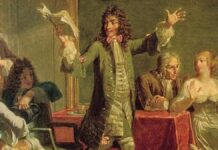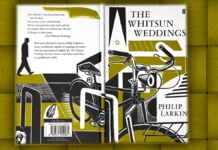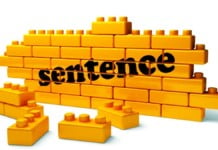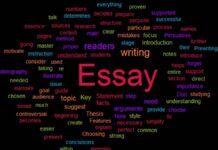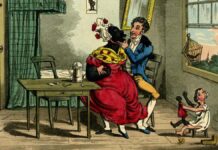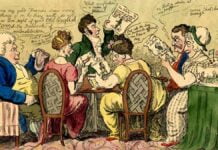English literature has a rich and diverse history spanning several ages, each with distinct characteristics and contributions. Literature from different periods exhibits distinct stylistic trends and conventions. For example, the elaborate metaphors of the Metaphysical poets differ markedly from the free verse of Modernist poetry. The concerns and themes prominent in literature change over time, often reflecting societal shifts. Reading literature from specific periods can unveil the dominant issues of the time, whether they were related to religion, nature, the human psyche, or technology. The divisions highlight the evolution of the English language, from the Old English of the Anglo-Saxon period to the Modern English of today. Understanding these changes is crucial for studying and interpreting texts from different eras.
Identifying the periods helps examine the connections between literature and other art forms of the time, including painting, music, and theatre since many artistic movements (such as Romanticism or Modernism) span multiple art forms. Periods serve as a framework for literary scholars to specialise and focus their research. It helps compare and contrast movements, trends, and paradigms in literary theory and criticism. These divisions help scholars and readers understand literature within its historical and cultural context. Each period reflects the prevailing political, social, and philosophical attitudes.
Old English Literature (5th to 11th centuries)
Old English literature, also known as Anglo-Saxon literature, spans from around the mid-5th century to the Norman Conquest of England in 1066. This was the literature of the Anglo-Saxons, who brought their Germanic languages and dialects to England, influencing the subsequent development of the English language. Old English literature was heavily influenced by the Germanic oral tradition, Christian themes brought by missionaries, and the classical works of Latin scholars. It comprises a rich tapestry of content that largely shaped the foundation for later English literary traditions.
Literature was focused on heroic poetry, such as the epic poem Beowulf. Other notable works include The Wanderer, The Seafarer, and The Dream of the Rood, which often explores themes of heroism, fate, and the transience of life.
- Dominated by poetry, although some prose works existed.
- Oral tradition was strong, later transitioning into written form thanks to Christianisation, which introduced Latin literacy to England.
- Alliterative verse was a key feature of Old English poetry, along with solid rhythm and kennings (metaphorical compounds).
- Themes often revolved around heroic deeds, warfare, and the struggle between good and evil.
- The literature of this period reflects the pagan and Christian influences present in Anglo-Saxon society.
Middle English Literature (12th to 15th centuries)
Middle English literature refers to the body of literary works produced between the Norman Conquest in 1066 and the late 15th century. This era marks a transition from Old English to developing an English language closer to the one currently spoken. The Norman Conquest brought Norman French as the language of the ruling classes, but over time, English reasserted itself, enriched by French and Latin elements.
This age saw the development of vernacular English literature, including the works of Geoffrey Chaucer, considered the father of English literature. His The Canterbury Tales is a seminal work that portrays the diverse society of the time. It’s a collection of stories told by pilgrims journeying to Canterbury Cathedral, which showcases Chaucer’s keen observation of medieval English society. Other significant works include the anonymous Sir Gawain and the Green Knight, Morte d’Arthur, and religious writings like The Pearl.
The church’s influence began to wane and is reflected in the secular nature of the literature of the period. The era also saw the planting of the seeds of the English Renaissance, with an increasing interest in the individual human experience and worldly rather than just spiritual matters.
- Middle English literature flourished after the Norman Conquest and is marked by the transition from Old English to Middle English.
- Development of a more standardised written form of the English language, although extensive regional dialects persisted.
- English started to regain its place as the dominant language of literature and official matters towards the end of the Middle English period.
- Emergence of literary forms such as chivalric romances, religious and secular plays, ballads, and a variety of lyrical poetry.
- Increased use of the iambic pentameter, which would dominate English verse forms in subsequent eras.
English Renaissance (16th and 17th centuries)
The English Renaissance was a cultural and artistic movement that lasted from the late 15th to the early 17th century. It is often divided into the Elizabethan, Jacobean, and late Renaissance (or Caroline) periods, each named after the reigning monarch. The English Renaissance was characterised by a revival of interest in classical learning, an emphasis on human potential and individuality, and a flowering of literature, especially drama, that expressed the complexities of the human experience.
Elizabethan Era (1558–1603)
Named for Queen Elizabeth I, this period is often considered a golden age in English history. Literature, particularly drama, experienced a remarkable flowering. The theatre thrived, with William Shakespeare dominating the period through his plays, which explored a vast range of human emotions and experiences. This period is dominated by the works of Shakespeare, the most renowned playwright and poet of all time. His plays, such as Hamlet, Macbeth, and Romeo and Juliet, are literary masterpieces. Christopher Marlowe contributed with his sophisticated verse and tragic heroes. Edmund Spenser’s The Faerie Queene is a hallmark of Elizabethan poetry, mirroring the intricate politics of the court and Elizabethan society. Sir Philip Sidney’s Astrophel and Stella also exemplifies the popular sonnet cycle. The era saw the development of English prose, including works like Sir Thomas More’s Utopia.
Jacobean Era (1603–1625)
Following Elizabeth’s death, James I ascended to the throne. This era saw the rise of playwrights like Ben Jonson, John Webster, and John Ford, who explored darker themes and tragedies, reflecting more on corruption and a changing society. Shakespeare continued writing with tragedies like King Lear and Macbeth. Ben Jonson emerged with his comedies of humour and satirical plays. Writers like John Donne moved away from smooth Elizabethan verse to a more complex metaphysical style in poetry.
Late Renaissance (Caroline Era, 1625–1649)
Named after King Charles I, during this time, the arts began to reflect the tensions leading up to the English Civil War. This period witnessed the emergence of metaphysical poetry by John Donne, George Herbert, and Andrew Marvell, known for its intellectual and philosophical nature. Theatre began to decline towards the end of this period, leading to the Puritan closing of the theatres in 1642. Before this, however, playwrights such as John Ford and Philip Massinger produced works. In poetry and prose, authors like Thomas Hobbes and poet John Milton were prominent, the latter’s early work foreshadowing his later masterpieces.
- The English Renaissance, spanning the late 15th to the early 17th century, saw a flowering of literature, art, and intellectual inquiry.
- Elizabethan literature, named after Queen Elizabeth I, includes the plays of William Shakespeare, Christopher Marlowe, and Ben Jonson, as well as the poetry of Edmund Spenser.
- The Jacobean period, under James I, produced works like Shakespeare’s later plays, John Donne’s metaphysical poetry, and the prose of Francis Bacon.
- The Late Renaissance witnessed the continuation of these trends and the rise of new genres, such as the metaphysical poem.
Restoration Age (1660-1700)
The Restoration Age refers to the period in English history that started in 1660 when the monarchy was restored under Charles II after the Puritan Commonwealth period under Oliver Cromwell. The term “Restoration” is typically not associated with Puritanism, which characterised the preceding era. Puritanism held sway during the early part of the 17th century, particularly evident in the interregnum (1649–1660), when the Puritans significantly influenced English social, political, and cultural life.
After the Puritan era, this age marked the reopening of theatres and the rise of satirical and comedic works by playwrights like William Wycherley and John Dryden, who dominated literary circles. Literature of this period often reflects the political and social upheaval of the time and the influence of Puritan morality. Notable works include John Milton’s Paradise Lost, John Bunyan’s The Pilgrim’s Progress, and the satirical comedies of William Wycherley and William Congreve. It’s worth noting that while Milton’s later works were written in the Restoration period, they reflect the Puritan value system with epic explorations of religious themes, contrasting with the more hedonistic, post-Puritan culture of the Restoration.
The Restoration Age was a time of significant cultural and political change. The literature of the period often engaged with contemporary issues: the return of the monarchy, the role of religion, and the changes in social mores. It laid the groundwork for the literature of the 18th century and the transition to Neoclassicism and the Enlightenment.
- Marked by a resurgence of drama, with the reopening of the theatres and the introduction of professional female actors.
- A turn towards satire and realism, particularly in the comedic works of playwrights like William Wycherley and William Congreve.
- Poetry of this era often had a witty, urbane, and sometimes passionate character, reflecting the mores of the court and the rise of libertine ideals.
- Increased interest in science and philosophy, a movement sometimes referred to as the Age of Enlightenment, started during this period.
18th Century (Augustan Age)
The 18th century in English literature, often referred to as the Augustan Age, drew its name from the parallel between the stability of the newly established constitutional monarchy in England and the Age of Augustus in Rome, which was perceived as a golden age of Latin literature. Literature of this period is characterised by rationalism, wit, and social satire, as seen in the works of Jonathan Swift, Alexander Pope, and Samuel Johnson. The age experienced the beginnings of literary criticism as a formal practice with people like Samuel Johnson, whose A Dictionary of the English Language was influential in standardising English, and his Lives of the Most Eminent English Poets provided biographical and critical studies of English poets.
The period also saw the development of the novel as a popular literary form, with writers like Daniel Defoe, Samuel Richardson, and Henry Fielding making significant contributions. The Augustan Age saw the rise of the professional writer, an increasing reading public, and the beginnings of the modern sense of authorship. It was a time of great intellectual activity, with pivotal developments in literature and English. This period saw a focus on reason, order, and classical ideals.
- An emphasis on reason, clarity, order, and decorum in literature, following the principles of Roman poet Horace and others.
- Satire became a dominant form of expression used to critique individuals and society.
- The emergence of the novel as a prominent literary form.
- Poetry often looked to the classical past for models and was characterised by polished, elegant verse and sometimes a return to the heroic couplet.
Romantic Age (late 18th to early 19th centuries)
The Romantic Age in English literature emerged as a reaction against the Enlightenment’s emphasis on reason and the Industrial Revolution’s impact on society. This literary period flourished from the late 18th century to roughly the 1830s, significantly overlapping with other literary movements. This age was a reaction against the rationalism of the Augustan Age, celebrating nature, emotion, and individuality. Key figures of this era include William Wordsworth, Samuel Taylor Coleridge, Lord Byron, Percy Bysshe Shelley, and John Keats, who explored themes of love, nature, and the supernatural in their poetry. The period also witnessed the rise of the Gothic novel, with works like Mary Shelley’s Frankenstein and Bram Stoker’s Dracula.
The Romantic Age saw writers seeking to express a new sense of nationhood and identity in the wake of the American and French Revolutions. This period marked a definitive shift from the classical to the more expressive, subjective, and introspective qualities that would define much of the literature and art in the years to come.
- Emphasis on emotion, individualism, and the glorification of all the past and nature, preferring the medieval rather than the classical.
- Romantic poets believed that nature was a source of spiritual and moral truth, and they often used pastoral landscapes in their work.
- There was a fascination with the supernatural, the exotic, and the gothic.
- A focus on the inner world of imagination and the expression of personal feelings.
- The Romantic thinkers challenged established norms and were often critical of societal structures, promoting ideas of freedom and revolution.
Victorian Age (1837-1901)
The Victorian Age in English literature is defined by the years of Queen Victoria’s reign from 1837 to her death in 1901. It was a time of significant social, economic, and technological changes, which were reflected in the literature of the period. This period saw a rise in novels and poetry that reflected the social and moral values of the era. Victorian literature reflected the complexities of Victorian society, with writers like Charles Dickens, Charlotte Brontë, Emily Brontë, and George Eliot addressing issues such as industrialisation, social class, gender roles, and morality. Oscar Wilde and Alfred Lord Tennyson were among the other prominent writers of this age.
The Victorian Age in English literature was characterised by a strong moral purpose, realism, the effects of industrialisation and urbanisation, debates on the roles and rights of women, the expansion of the British Empire, and innovation in literary form and genre. The literature of this period often explored and critiqued contemporary social and political issues, such as the disparities caused by industrialisation and urbanisation.
- Moral Purpose: Victorian literature often carried a strong moral message. Writers felt that their work should contribute to the betterment of society by highlighting issues such as poverty, child labour, and the plight of women.
- Realism: This era saw a focus on realistic portrayals of everyday life and society. Writers aimed to depict the world accurately and often used their work to explore and critique contemporary social and political issues.
- Industrialisation and Urbanisation: The literature of the time frequently depicted the challenges and transformations brought about by rapid industrial growth, including the emergence of the middle class and the expansion of cities.
- The Woman Question: Gender issues, particularly the roles and rights of women, were a significant concern. The so-called “Woman Question” involved discussions about women’s education, voting, and societal roles.
- Expansion of the Empire: The literature of the time also reflected Britain’s imperial ambitions and the complexities of colonial rule.
- Innovation in Literary Form and Genre: The Victorian period saw the development of serial novels and the rise of detective fiction, children’s literature, science fiction, and adventure novels.
20th Century (Modernism, Postmodernism)
The 20th century in English literature is characterised by two distinct movements—Modernism and Postmodernism—each responding to unprecedented social, political, and cultural change. The period saw the emergence of modernist literature, characterised by experimentation, fragmentation, and a rejection of traditional forms and conventions.
Modernist writers such as Virginia Woolf, James Joyce, T S Eliot, and Ezra Pound explored themes of alienation, disillusionment, and the fragmentation of consciousness in their works. Postmodernism, which emerged later in the century, further challenged traditional notions of narrative, truth, and identity, with writers like Samuel Beckett, Salman Rushdie, and Margaret Atwood pushing the boundaries of literary form and style.
Postmodern literature often challenges readers to question their perceptions and to recognise the complexities and contradictions in their understanding of the world. The movement can be seen both as an extension of Modernism’s experimental techniques and as a reaction against it, critiquing its pretensions to artistic seriousness and its failure to account for the chaos and heterogeneity of the post-World War II world.
Modernism and Postmodernism are remembered for their groundbreaking and unorthodox approaches to literature. They provided profound reflections on—and radical departures from—traditional storytelling as they grappled with the complexities of the modern and postmodern worlds.
Modernism (early to mid-20th century)
Modernism arose as a reaction against the perceived limitations of Victorian realism, questioning traditional narratives and conventions. This movement rejected conventional literary forms and explored new styles and themes. Notable writers include T S Eliot, James Joyce, Virginia Woolf, and D H Lawrence.
- Fragmentation: Modernist works often feature fragmented structures, non-linear narratives, and stream-of-consciousness techniques.
- Alienation and Disillusionment: The devastation of World War I led to a widespread sense of disillusionment, which modernist writers expressed through themes of alienation, loss, and the questioning of objective reality.
- Rejection of Tradition: Modernists frequently rejected traditional forms and experimented with new styles and writing techniques to better capture the complexities of modern life.
- Focus on Subjectivity: There was a shift toward exploring the inner workings of the human mind, reflected in the introspection and psychological depth of characters.
Postmodernism (mid to late 20th century)
Postmodernism built upon and complicated Modernist ideas, often characterised by a playful and irreverent approach to literature. This period challenged traditional narratives and explored fragmentation, subjectivity, and the deconstruction of language. Writers like Samuel Beckett, Salman Rushdie, and Toni Morrison were influential in this movement.
- Playfulness and Irony: Postmodern works often employ a playful, irreverent, or ironic approach, showing scepticism towards grand narratives and ideologies.
- Metafiction: Postmodern works frequently contain a self-referential aspect, with authors deliberately breaking the fourth wall or blurring the lines between fiction and reality.
- Intertextuality: Postmodern texts often incorporate references to other texts, highlighting the interrelatedness of cultural narratives.
- Pastiche and Parody: Postmodernism is known for mixing styles, genres, and cultural elements, often in a satirical or parodic way.
- Scepticism and Relativism: Postmodernists were sceptical of grand narratives and ideologies, instead focusing on individual perspectives and the relativity of truth.
- Fragmentation: Postmodern narratives often feature non-linear storytelling, fragmented plots, and disjointed timelines.
21st Century (Contemporary)
The 21st century, or the Contemporary Age in English literature, is multifaceted and challenging due to its recency and ongoing development. It continues to evolve, reflecting the diverse voices and experiences of writers from various backgrounds. It often explores themes of identity, globalisation, and the impact of technology on society.
Contemporary literature encompasses a diverse range of voices, styles, and genres, reflecting the globalised, technologically-driven world of the 21st century. Themes explored in contemporary literature include globalisation, identity, environmentalism, social justice, and the impact of technology on human relationships. Notable contemporary writers include Zadie Smith, Chimamanda Ngozi Adichie, Haruki Murakami, Jhumpa Lahiri, and Ta-Nehisi Coates, among many others, who continue to push the boundaries of literary expression and engage with the pressing issues of our time.
- Technological Influence: The digital revolution has had a significant impact on literature. The proliferation of the internet, social media, and e-books has broadened the scope for publishing and reading, leading to more interactive and web-based literature.
- Globalisation: The literature of this period is marked by a global perspective. Writers from various cultures contribute to the body of English literature, offering a diverse range of themes and styles.
- Genre Blending: While genre fiction like fantasy, science fiction, and crime has become more sophisticated and mainstream, literary fiction often incorporates elements of these genres, leading to rich, hybrid texts.
- Narrative Styles: Contemporary writers continue to experiment with narrative forms. Unreliable narrators, non-linear timelines, and stream of consciousness are employed by various writers to explore complex themes.
- Cultural Diversity and Identity: There is a focus on exploring identity in a multicultural world, with increased attention on stories from racial, ethnic, sexual, and gender minorities.
- Post-postmodernism: Some scholars suggest we are in a post-postmodern era, characterised by a return to narrative and emotional engagement and away from the extreme irony and scepticism of postmodernism.
- Critical Engagement: Contemporary literature is increasingly used as a platform to engage with critical social issues, such as climate change, racial inequality, and global crises.
Each of these ages in English literature reflects the cultural, social, and intellectual currents of its time, showcasing the evolution of literary expression and the enduring power of storytelling to illuminate the human experience. However, these periods are not definitive containers but broad categorisations that help us understand the evolution of English literature’s form, content, and context over time. Periodisation is often a matter of scholarly debate, and the boundaries between these periods are usually not rigid; literature does not abruptly change as one period transitions to another. Instead, the characteristics of literature from neighbouring periods often overlap and inform one another, and individual authors may stand out as exceptions to the dominant trends of their times. This periodisation only provides a glimpse into the rich tapestry of English literature, where each age has contributed to the development and evolution of literary forms, styles, and themes.












